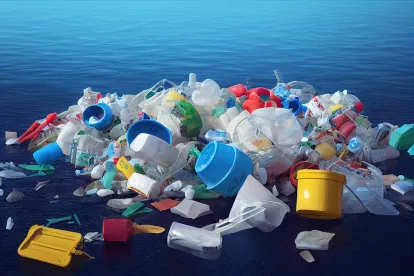On December 5, 2022, the U.S. Environmental Protection Agency (EPA) provided notice in the Federal Register (see “Federal Register”/Vol. 87, No. 232/Monday December 5, 2022) of a Proposed Rule that would make significant changes for reporting of PFAS compounds pursuant to the “Toxic Release Inventory” (TRI) reporting requirements of the Emergency Planning Community Right-to-Know Act (EPCRA).
The TRI Rules require that specific industries identified under a variety of SIC Codes, which includes most manufacturers, mining facilities, electric power generating facilities, and hazardous waste treatment facilities, report by July 1 of each year the quantity of TRI-listed chemicals that they “release” into the environment (land, air, water). “Releases” include spilling, leaking, pumping, pouring, emitting, emptying, discharging, injecting, escaping, leaching, dumping, or disposing of TRI-listed chemicals into the environment. This can include air emissions, such as evaporation and emissions from a smoke stack, discharges to water, such as a direct discharge to a water body and/or stormwater runoff, or discharges to land, including disposal of chemical wastes to a landfill, or the application of waste to agricultural lands as a fertilizer. The TRI tracks these releases of chemicals in a database which provides information to the EPA and the public on chemicals which could pose a threat to human health and the environment. The form is reported annually to the EPA and is commonly known as a “Form R” report.
Regulated entities that manufacture, process or otherwise use a TRI-listed chemical (there are approximately 695 TRI-listed chemicals) must report annual releases to the EPA that are above a regulatory reporting threshold. “Manufacturing” incudes generating a listed chemical whether intentionally or coincidentally as an impurity or by-product as well as importing. “Processing” includes preparation of a TRI-listed chemical, after its manufacture, for distribution in commerce (e.g., use as a reactant to manufacture another substance or product, added as a formulation component, incorporated as an article component, repackaged for distribution, quantities sent off-site for recycling, and incidental inclusion as an impurity). “Otherwise use” includes use of a TRI-listed chemical that is not included in manufacturing or processing. An example of “otherwise use” of a chemical could include use of a TRI-listed solvent as a manufacturing aid during a painting process in which the solvent is not intended to be a part of the final product, but is used to facilitate the painting process in which the solvent evaporates during the painting process.
At present, there is a “de minimis exemption” from the requirement to report PFAS if a PFAS chemical constitutes less than 1% of a product that an entity manufactures, processes or otherwise uses. However, the de minimis exemption does not apply to “Chemicals of Special Concern,” which includes chemicals that are persistent, bio-accumulative, and/or acutely toxic.
If the Proposed Rule is ultimately adopted, the EPA would classify PFAS as “Chemicals of Special Concern,” and would eliminate them from the de minimis exemption and require reporting of any quantities of PFAS compounds in annual TRI reports.
In addition, the “Supplier Notification Requirements” of the TRI Rules also require notification by entities that sell or distribute a product containing a TRI-listed chemical to a facility under a covered SIC Code or a person or entity that may sell the product to another entity in a covered SIC Code, that the product contains a TRI-listed chemical. Currently, the “de minimis exemption” also applies to the Supplier Notification Requirements. However, if adopted, the Proposed Rules would also remove the “de minimis exemption” for PFAS from the Supplier Notification Requirements.
EPA’s justification for these proposed changes to the TRI Rules is due to the persistence of PFAS chemicals in the environment and the concern over the potential toxic effects to human health and the environment that are posed by PFAS chemicals. Through the adoption of the Proposed Rules, the EPA desires to better track the use and management of these substances to attempt to reduce their impact on human health and the environment.
If adopted, the impact of these Proposed Rules will be to significantly increase the efforts of regulated entities to identify, track and report any quantity of PFAS in products that they manufacture, process or otherwise use, which will require, in some instances, a substantial increase in work associated with TRI annual reporting. Public comments to the Proposed TRI Rules must be provided to the EPA by February 3, 2023.
Background on PFAS
“PFAS” is an acronym for per- and polyfluorolalkyl substances, which are chemicals that were widely used from the 1960s to the early 2000s in the manufacture of a variety of consumer products, such as stain resistant carpets, non-stick cookware (e.g., Teflon), firefighting foam, food packaging (e.g., microwave popcorn bags/pizza boxes), water resistant clothing (e.g., pre-2000 GoreTex), water resistant repellent (e.g., Scotchgard) and dental floss. Two PFAS compounds in particular, perfluorooctanoic acid (PFOA) and perflourooctane sulfonic acid (PFOS), have been historically used in numerous manufactured products. While there have been efforts to phase out use of PFAS in the U.S., there still are many products that contain PFAS compounds.
PFAS are referred to as “forever chemicals,” and they have received considerable attention by federal and state environmental regulatory agencies because of their resistance to chemical breakdown due to the chemical bond between carbon and fluorine atoms in the PFAS compounds, which is one of the strongest in nature. Because of this, humans can still be exposed to PFAS long after the chemicals were released into the environment. In addition, it is estimated that 98% of Americans likely have detectable concentrations of PFAS in their bodies, and medical studies have suggested that PFAS can cause thyroid disease, pancreatic dysfunction, hormone disruption, kidney and liver damage, and an elevated risk of cancer.




 />i
/>i

